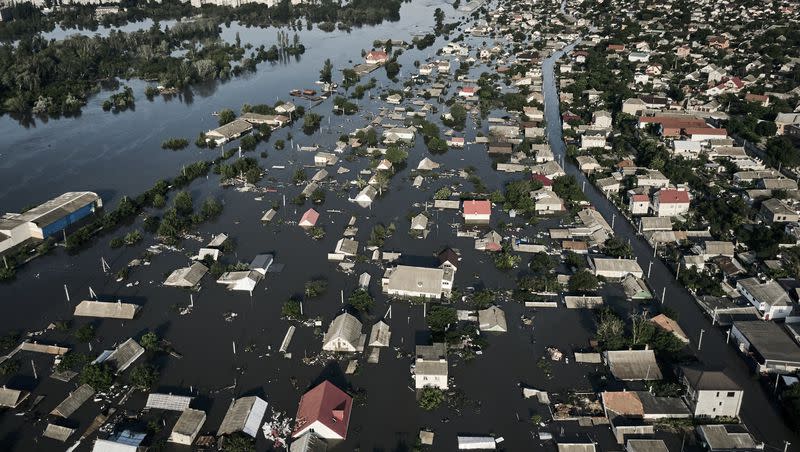What we know about the Ukraine dam explosion

A major dam experienced a wall collapsing in southern Ukraine on Tuesday, causing floods and threatening water supplies. Russia and Ukraine each blamed the other for the incident. A state of emergency has been declared.
The Khakhovka Hydroelectric Power Plant is located on the Dnieper River, where Russia has taken control. The incident also threatens Europe’s largest nuclear power plant, the Zaporizhzhia Nuclear Power Plant, because it endangers water supplies that cool it. The volume of water the dam holds back is comparable to the size of the Great Salt Lake, per BBC.
The head of International Atomic Energy said that there is “no immediate risk” to the plant’s safety, according to The Washington Post.
Emergency crews have started evacuations — there are 22,000 people in Russian-controlled areas at risk of flooding, while there are 16,000 who live in the critical zone in Ukrainian territory at risk, The Associated Press reported.
Floodwaters swept over homes in nearby communities Wednesday, leaving “hundreds of thousands of people without access to drinking water,” per Reuters.
“Everything is submerged in water, all the furniture, the fridge, food, all flowers, everything is floating. I do not know what to do,” Oksana, a 53-year-old resident of Kherson, one of the cities downriver from the dam, told Reuters.
People who weren’t able to evacuate are being “warned of floating mines and the threat of disease” from the floodwaters and damage incurred from the flooding, according to NBC News.
Who damaged the dam in Ukraine?
Determining who caused the collapse has proven difficult, as it is not “immediately clear whether either side benefits from the damage to the dam” — it could “hinder Ukraine’s counteroffensive in the south and distract its government, while Russia depends on the dam to supply water to Crimea,” per AP.
According to The New York Times, Ukraine’s President Volodymyr Zelenskyy blamed “Russian terrorists,” and “Kremlin’s spokesman, Dmitry S. Peskov, blamed Ukrainian forces, describing what happened as a ‘sabotage’ attack.”
Who stands to benefit or hurt most from Ukrainian dam damage?
The flooding in the area could slow Ukraine’s counteroffensive plans, allowing Russia to break Ukraine’s momentum, but it could also be helpful for Ukraine’s counteroffensive by washing away Russian fortifications and minefields in the region.
Russia insists that the damage was “sabotage” and that it “was aimed to deprive Crimea of water and distract attention from the failure of the Ukrainian offensive,” according to Peskov, per The Wall Street Journal.
But some experts say the incident is more beneficial to Russia than Ukraine.
“Russia can now ... reinforce the front line in the Zaporizhia region, and possibly to the east as well, because there is no longer a threat of Ukraine actually crossing the Dneiper,” former German Defense Ministry official Nico Lange told the Journal.

